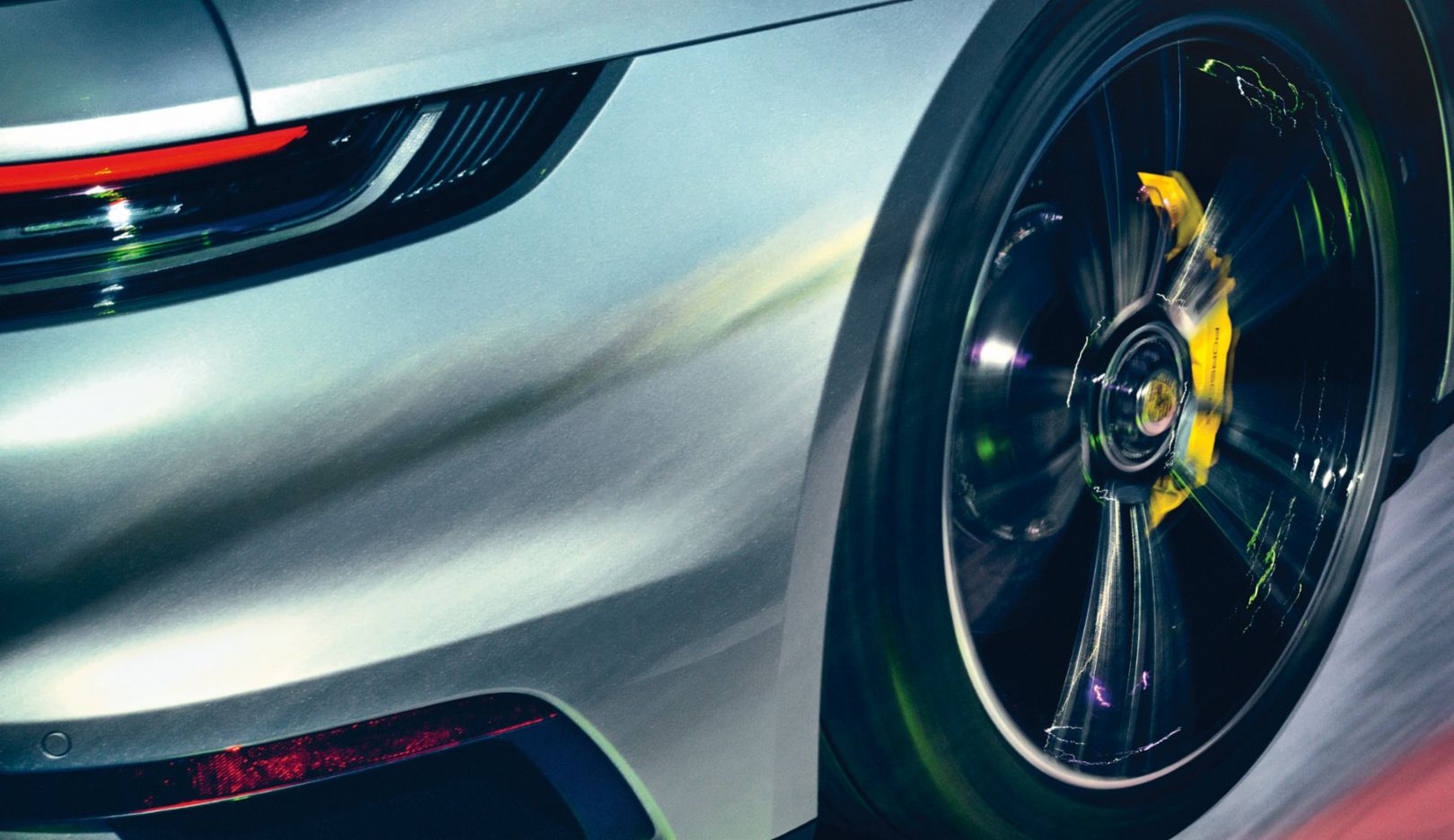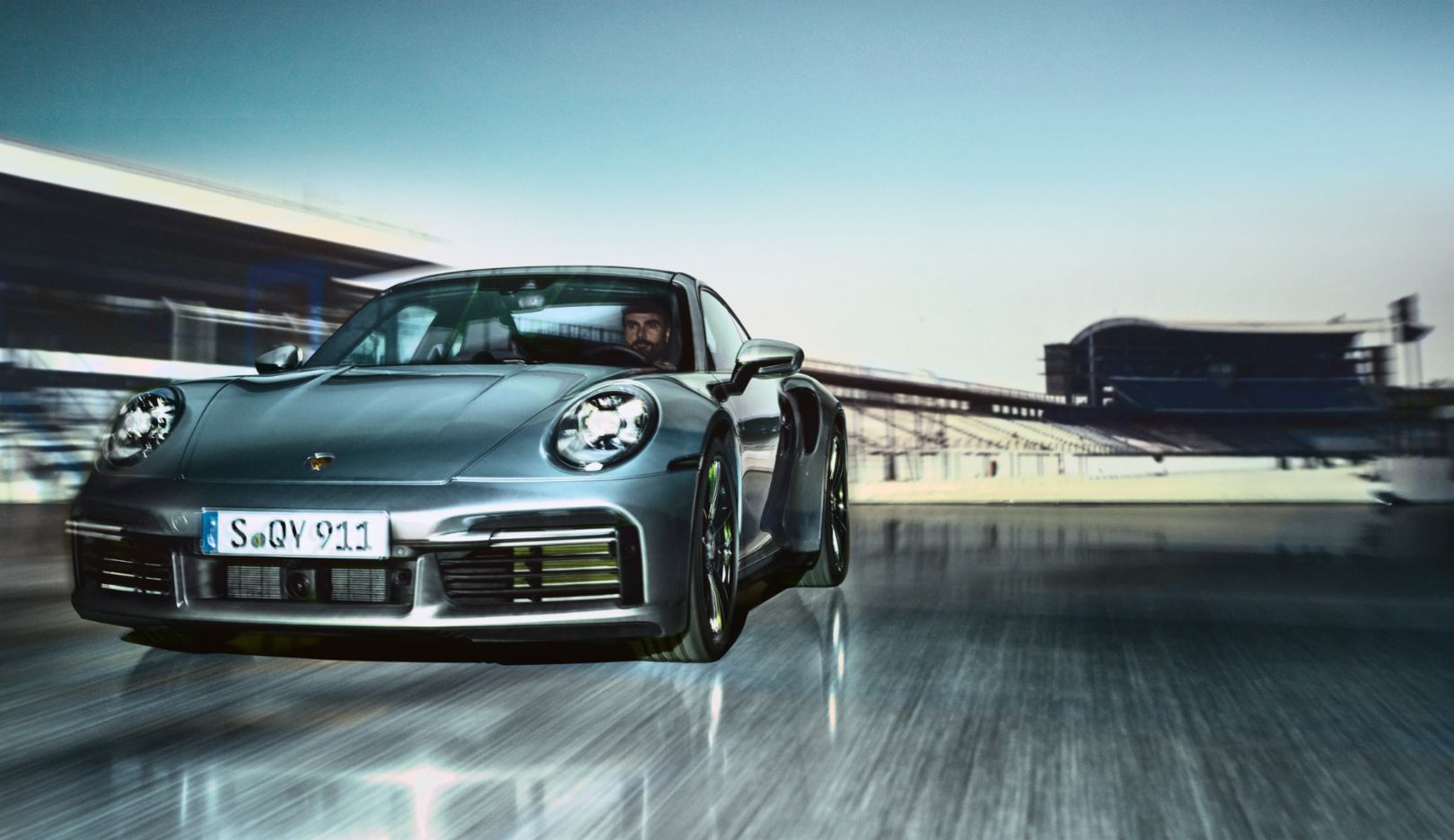Maximum in Series: The New Porsche 911
More agile, more efficient, even more perfect—the new Porsche 911 is setting new benchmarks in every respect.
Porsche 911 Turbo S Coupé
Fuel consumption
City: 15.5 l/100 km
Highway: 8.6 l/100 km
Combined: 11.1 l/100 km
CO2 emissions combined: 254 g/km (as of 03/2020)

10 pistons
Model dimensions
“A perfect ten.” That’s what the fashion world says about a flawless model. In the new Porsche 911 Turbo S, the perfect ten is in the details, because for the first time ever, ten pistons grasp the standard 420-millimeter ceramic brake rotors at the front axle. They look good, but more importantly, bring this supermodel to a halt quickly and reliably. The airbrake function now helps, too, when decelerating at higher speeds: the front and rear spoilers move into performance position and brace themselves against the wind. A wet asphalt road surface? It simply sharpens all the senses of the assistance systems in the Porsche 911 Turbo S. For the first time, the turbo model features Wet Mode, which “hears” the wetness via sensors in the wheel arches, reports it to the cockpit, and primes the stability control systems for wet roads. The driver then decides whether to activate the system. Smart, strong, fast, and attractive—you won’t find this perfect ten on the catwalk, only on the road.

800 Nm
650 PS maximum in series
21 inches meet 20
A well-rounded composition—taken one step further
With 800 Nm of torque and 650 PS (911 Turbo S Coupé: Fuel consumption combined 11.1 l/100 km, CO2 emissions combined 254 g/km ), the powerful new Porsche 911 Turbo S is certain to be well received. For the first time, staggered wheel diameters contribute to optimal grip on the road. Twenty-one inches at the rear axle with tires sized 315/30 ZR 21; at the front, as before, twenty-inch rims plus tires sized 255/35 ZR 20. And with forty-two millimeters more track width at the front and ten millimeters at the rear, the car is now wider. On board for the first time: a tire temperature control that indicates when optimum grip is available by means of a blue or green dot. The optional refined PASM sports suspension heightens driving pleasure on every surface and in every corner. On the straight, the improved adaptive aerodynamics with automatic spoiler adjustment provide additional downforce, because more pressure on the rear axle provides stability at high speeds. All in all, well mixed all-around.

Drives as fast as it looks
2.7 seconds
Classic turbo virtues
“One ride and you’ll understand why most rocket scientists are German”—Porsche Cars North America’s casual slogan for the Porsche turbo in the late 1980s. It might be time to unpack that slogan again, because 2.7 seconds from zero to 100 kmh and 8.9 seconds to 200 kmh speak for themselves. The new model shaves exactly 0.2 seconds off the predecessor’s time to 100 kmh. It’s even a whole second faster in getting to 200 kmh. This is the result of consistent weight optimization, from the optional lightweight glass to the extra-light lithium-iron-phosphate battery that, hidden deep below, makes its own contribution to the total package. And something so perfectly tuned down to the last detail has no reason to hide its light under a bushel. Wide air intakes in front, dual daytime running lights, wide rear fenders with air intakes, and the classic flat rear wing make it immediately clear: here it comes, the new Porsche 911 Turbo S.


